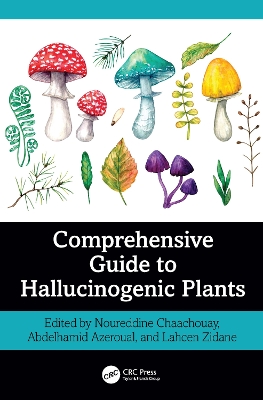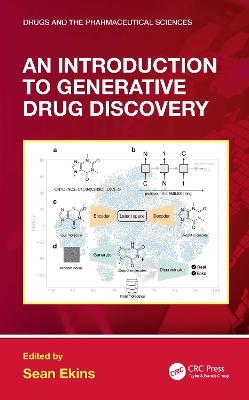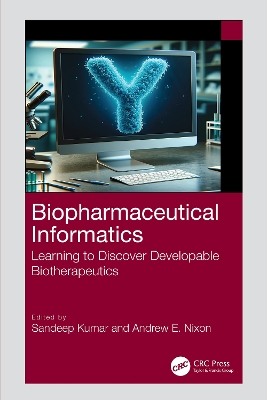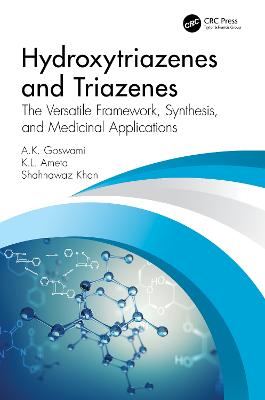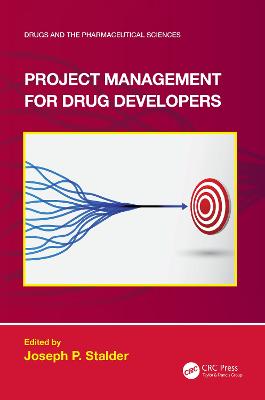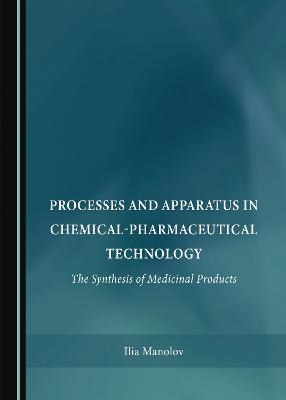Supramolecular Synthons in Crystal Engineering of Pharmaceutical Properties
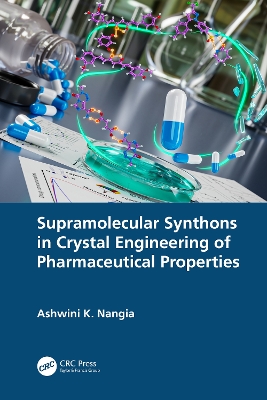 portes grátis
portes grátis
Supramolecular Synthons in Crystal Engineering of Pharmaceutical Properties
Nangia, Ashwini K.
Taylor & Francis Ltd
10/2024
182
Dura
9781032196114
15 a 20 dias
Descrição não disponível.
Chapter 1 Introduction to Supramolecular Chemistry and Crystal Engineering
1.1 Introduction
1.2 Organic synthesis
1.3 Supramolecular chemistry
1.4 Crystal engineering
1.5 Hydrogen bonding
1.6 Space groups
1.7 Summary conclusions
1.8 References
1.9 Questions and thoughts
1.10 Additional reading
Chapter 2 Crystal Engineering, Supramolecular Synthons, and Cocrystal Design
2.1 Introduction
2.2 Supramolecular synthons
2.3 Crystal engineering of pharmaceutical cocrystals
2.3.1 Cocrystals
2.3.2 Pharmaceutical cocrystals
2.4 Cocrystal design approaches
2.4.1 Hydrogen bond synthons
2.4.2 ?pKa rule
2.4.3 Computational methods
2.4.4 Molecular electrostatic potential surface energy
2.4.5 Hansen solubility parameter
2.5 Summary conclusions
2.6 References
2.7 Questions and thoughts
Chapter 3 Pharmaceutical Solid-State Forms
3.1 Introduction
3.2 Pharmaceutical multi-component crystals
3.2.1 Drug salts and pharmaceutical cocrystals
3.2.2 Pharmaceutical cocrystals via crystal engineering
3.2.3 Coamorphous solids
3.2.4 Solid solutions and eutectics
3.2.5 Ionic liquids
3.2.6 Ionic cocrystals
3.2.7 Nanocrystalline drugs
3.2.8 Supramolecular gels of drugs
3.2.9 Salt?cocrystal continuum or hybrid quasi-state of proton
3.2.10 Cocrystal polymorphs
3.2.11 Ternary and higher organic cocrystals
3.3 Summary conclusions
3.4 References
3.5 Questions and thoughts
Chapter 4 Design and Methodology of Pharmaceutical Cocrystals
4.1 Introduction
4.2 Complementarity between API and coformer
4.3 Preparation methods of cocrystals
4.3.1 Spray drying
4.3.2 Freeze drying
4.3.3 Hot melt extrusion
4.3.4 Rotary evaporator method
4.3.5 Vapor-assisted tumbling
4.4 Drug?drug cocrystals
4.5 Drug?nutraceutical cocrystals
4.6 Ternary and higher order cocrystals
4.7 Cocrystals of different stoichiometry
4.8 Zwitterionic cocrystals
4.9 Halogen-bonded pharmaceutical cocrystals
4.10 Characterization methods of cocrystals
4.11 Summary conclusions
4.12 References
4.13 Questions and thoughts
Chapter 5 Applications of Pharmaceutical Cocrystals
5.1 Introduction
5.2 Bioavailability improvement
5.3 Hydration stability
5.4 Chemical degradation stability
5.5 Tableting
5.6 Mechanical properties
5.7 Phase diagram and solubility measurements
5.8 Permeability and plasma concentration
5.9 Spring and Parachute model
5.10 Summary conclusions
5.11 References
5.12 Questions and thoughts
Chapter 6 Continuous Manufacturing of Cocrystals and Salts
6.1 Introduction
6.2 Batch and flow chemistry
6.3 Flow chemistry and pharmaceutical cocrystals manufacturing
6.4 Case studies of pharmaceutical cocrystals and salts
6.5 Continuous process technologies
6.6 Flow guide for the synthetic chemist
6.7 Summary conclusions
6.8 References
6.9 Questions and thoughts
Chapter 7 Commercial Outlook of Pharmaceutical Cocrystals
7.1 Introduction
7.2 Present status
7.3 Patenting and regulatory aspects
7.4 Entresto (R) drug-drug cocrystal salt
7.5 Seglentis (R) US-FDA approval
7.6 Summary conclusions
7.7 References
7.8 Questions and thoughts
Chapter 8 Controlling Polymorphism
8.1 Introduction
8.2 Definition and importance
8.3 Polymorphism and cocrystallization
8.4 Tailored additives to control crystal size and morphology
8.5 Summary conclusions
8.6 References
8.7 Questions and thoughts
Chapter 9 Supramolecular Heterosynthon in High Bioavailability Drugs
9.1 Introduction
9.2 Common heterosynthons in drugs
9.3 Heterosynthon model for high bioavailability drugs
9.4 Models for permeability enhancement
9.5 Cocrystal drugs beyond the Rule of 5
9.6 Improving cell penetration by atom replacement
9.7 Summary conclusions
9.9 Questions and thoughts
Chapter 10 Other Applications of Cocrystals
10.1 Introduction
10.2 Property engineering
10.3 Mechanochemistry
10.4 Energetic cocrystals
10.5 Summary conclusions
10.6 References
10.7 Questions and thoughts
Chapter 11 AI ML ChatGPT in Chemistry
11.1 Introduction
11.2 Retrosynthetic reaction prediction
11.3 Medicinal molecules
11.4 MOFs and inorganic materials
11.5 Cocrystals
11.6 Summary conclusions
11.7 References
11.8 Questions and thoughts
Chapter 12 3D Electron Diffraction
12.1 Introduction
12.2 Advantages of ED
12.3 Resurgence of ED
12.4 New pharmaceutical challenges solved by ED
12.5 Summary conclusions
12.6 References
12.7 Questions and thoughts
Chapter 13 Challenges, Conclusions, and Future Directions
13.1 Introduction
13.2 Carboxamide?pyridine-N-oxide heterosynthon
13.3 Browsing the literature
13.4 Challenges in pharmaceutical cocrystal technology
13.5 Conclusions
13.6 References
13.7 Suggested reading
Index
1.1 Introduction
1.2 Organic synthesis
1.3 Supramolecular chemistry
1.4 Crystal engineering
1.5 Hydrogen bonding
1.6 Space groups
1.7 Summary conclusions
1.8 References
1.9 Questions and thoughts
1.10 Additional reading
Chapter 2 Crystal Engineering, Supramolecular Synthons, and Cocrystal Design
2.1 Introduction
2.2 Supramolecular synthons
2.3 Crystal engineering of pharmaceutical cocrystals
2.3.1 Cocrystals
2.3.2 Pharmaceutical cocrystals
2.4 Cocrystal design approaches
2.4.1 Hydrogen bond synthons
2.4.2 ?pKa rule
2.4.3 Computational methods
2.4.4 Molecular electrostatic potential surface energy
2.4.5 Hansen solubility parameter
2.5 Summary conclusions
2.6 References
2.7 Questions and thoughts
Chapter 3 Pharmaceutical Solid-State Forms
3.1 Introduction
3.2 Pharmaceutical multi-component crystals
3.2.1 Drug salts and pharmaceutical cocrystals
3.2.2 Pharmaceutical cocrystals via crystal engineering
3.2.3 Coamorphous solids
3.2.4 Solid solutions and eutectics
3.2.5 Ionic liquids
3.2.6 Ionic cocrystals
3.2.7 Nanocrystalline drugs
3.2.8 Supramolecular gels of drugs
3.2.9 Salt?cocrystal continuum or hybrid quasi-state of proton
3.2.10 Cocrystal polymorphs
3.2.11 Ternary and higher organic cocrystals
3.3 Summary conclusions
3.4 References
3.5 Questions and thoughts
Chapter 4 Design and Methodology of Pharmaceutical Cocrystals
4.1 Introduction
4.2 Complementarity between API and coformer
4.3 Preparation methods of cocrystals
4.3.1 Spray drying
4.3.2 Freeze drying
4.3.3 Hot melt extrusion
4.3.4 Rotary evaporator method
4.3.5 Vapor-assisted tumbling
4.4 Drug?drug cocrystals
4.5 Drug?nutraceutical cocrystals
4.6 Ternary and higher order cocrystals
4.7 Cocrystals of different stoichiometry
4.8 Zwitterionic cocrystals
4.9 Halogen-bonded pharmaceutical cocrystals
4.10 Characterization methods of cocrystals
4.11 Summary conclusions
4.12 References
4.13 Questions and thoughts
Chapter 5 Applications of Pharmaceutical Cocrystals
5.1 Introduction
5.2 Bioavailability improvement
5.3 Hydration stability
5.4 Chemical degradation stability
5.5 Tableting
5.6 Mechanical properties
5.7 Phase diagram and solubility measurements
5.8 Permeability and plasma concentration
5.9 Spring and Parachute model
5.10 Summary conclusions
5.11 References
5.12 Questions and thoughts
Chapter 6 Continuous Manufacturing of Cocrystals and Salts
6.1 Introduction
6.2 Batch and flow chemistry
6.3 Flow chemistry and pharmaceutical cocrystals manufacturing
6.4 Case studies of pharmaceutical cocrystals and salts
6.5 Continuous process technologies
6.6 Flow guide for the synthetic chemist
6.7 Summary conclusions
6.8 References
6.9 Questions and thoughts
Chapter 7 Commercial Outlook of Pharmaceutical Cocrystals
7.1 Introduction
7.2 Present status
7.3 Patenting and regulatory aspects
7.4 Entresto (R) drug-drug cocrystal salt
7.5 Seglentis (R) US-FDA approval
7.6 Summary conclusions
7.7 References
7.8 Questions and thoughts
Chapter 8 Controlling Polymorphism
8.1 Introduction
8.2 Definition and importance
8.3 Polymorphism and cocrystallization
8.4 Tailored additives to control crystal size and morphology
8.5 Summary conclusions
8.6 References
8.7 Questions and thoughts
Chapter 9 Supramolecular Heterosynthon in High Bioavailability Drugs
9.1 Introduction
9.2 Common heterosynthons in drugs
9.3 Heterosynthon model for high bioavailability drugs
9.4 Models for permeability enhancement
9.5 Cocrystal drugs beyond the Rule of 5
9.6 Improving cell penetration by atom replacement
9.7 Summary conclusions
9.9 Questions and thoughts
Chapter 10 Other Applications of Cocrystals
10.1 Introduction
10.2 Property engineering
10.3 Mechanochemistry
10.4 Energetic cocrystals
10.5 Summary conclusions
10.6 References
10.7 Questions and thoughts
Chapter 11 AI ML ChatGPT in Chemistry
11.1 Introduction
11.2 Retrosynthetic reaction prediction
11.3 Medicinal molecules
11.4 MOFs and inorganic materials
11.5 Cocrystals
11.6 Summary conclusions
11.7 References
11.8 Questions and thoughts
Chapter 12 3D Electron Diffraction
12.1 Introduction
12.2 Advantages of ED
12.3 Resurgence of ED
12.4 New pharmaceutical challenges solved by ED
12.5 Summary conclusions
12.6 References
12.7 Questions and thoughts
Chapter 13 Challenges, Conclusions, and Future Directions
13.1 Introduction
13.2 Carboxamide?pyridine-N-oxide heterosynthon
13.3 Browsing the literature
13.4 Challenges in pharmaceutical cocrystal technology
13.5 Conclusions
13.6 References
13.7 Suggested reading
Index
Este título pertence ao(s) assunto(s) indicados(s). Para ver outros títulos clique no assunto desejado.
Cocrystals salts;Amorphous solid dispersion;Drug eutectics;Solubility dissolution;Permeability drug flux;Bioavailability plasma concentration;Process manufacturing
Chapter 1 Introduction to Supramolecular Chemistry and Crystal Engineering
1.1 Introduction
1.2 Organic synthesis
1.3 Supramolecular chemistry
1.4 Crystal engineering
1.5 Hydrogen bonding
1.6 Space groups
1.7 Summary conclusions
1.8 References
1.9 Questions and thoughts
1.10 Additional reading
Chapter 2 Crystal Engineering, Supramolecular Synthons, and Cocrystal Design
2.1 Introduction
2.2 Supramolecular synthons
2.3 Crystal engineering of pharmaceutical cocrystals
2.3.1 Cocrystals
2.3.2 Pharmaceutical cocrystals
2.4 Cocrystal design approaches
2.4.1 Hydrogen bond synthons
2.4.2 ?pKa rule
2.4.3 Computational methods
2.4.4 Molecular electrostatic potential surface energy
2.4.5 Hansen solubility parameter
2.5 Summary conclusions
2.6 References
2.7 Questions and thoughts
Chapter 3 Pharmaceutical Solid-State Forms
3.1 Introduction
3.2 Pharmaceutical multi-component crystals
3.2.1 Drug salts and pharmaceutical cocrystals
3.2.2 Pharmaceutical cocrystals via crystal engineering
3.2.3 Coamorphous solids
3.2.4 Solid solutions and eutectics
3.2.5 Ionic liquids
3.2.6 Ionic cocrystals
3.2.7 Nanocrystalline drugs
3.2.8 Supramolecular gels of drugs
3.2.9 Salt?cocrystal continuum or hybrid quasi-state of proton
3.2.10 Cocrystal polymorphs
3.2.11 Ternary and higher organic cocrystals
3.3 Summary conclusions
3.4 References
3.5 Questions and thoughts
Chapter 4 Design and Methodology of Pharmaceutical Cocrystals
4.1 Introduction
4.2 Complementarity between API and coformer
4.3 Preparation methods of cocrystals
4.3.1 Spray drying
4.3.2 Freeze drying
4.3.3 Hot melt extrusion
4.3.4 Rotary evaporator method
4.3.5 Vapor-assisted tumbling
4.4 Drug?drug cocrystals
4.5 Drug?nutraceutical cocrystals
4.6 Ternary and higher order cocrystals
4.7 Cocrystals of different stoichiometry
4.8 Zwitterionic cocrystals
4.9 Halogen-bonded pharmaceutical cocrystals
4.10 Characterization methods of cocrystals
4.11 Summary conclusions
4.12 References
4.13 Questions and thoughts
Chapter 5 Applications of Pharmaceutical Cocrystals
5.1 Introduction
5.2 Bioavailability improvement
5.3 Hydration stability
5.4 Chemical degradation stability
5.5 Tableting
5.6 Mechanical properties
5.7 Phase diagram and solubility measurements
5.8 Permeability and plasma concentration
5.9 Spring and Parachute model
5.10 Summary conclusions
5.11 References
5.12 Questions and thoughts
Chapter 6 Continuous Manufacturing of Cocrystals and Salts
6.1 Introduction
6.2 Batch and flow chemistry
6.3 Flow chemistry and pharmaceutical cocrystals manufacturing
6.4 Case studies of pharmaceutical cocrystals and salts
6.5 Continuous process technologies
6.6 Flow guide for the synthetic chemist
6.7 Summary conclusions
6.8 References
6.9 Questions and thoughts
Chapter 7 Commercial Outlook of Pharmaceutical Cocrystals
7.1 Introduction
7.2 Present status
7.3 Patenting and regulatory aspects
7.4 Entresto (R) drug-drug cocrystal salt
7.5 Seglentis (R) US-FDA approval
7.6 Summary conclusions
7.7 References
7.8 Questions and thoughts
Chapter 8 Controlling Polymorphism
8.1 Introduction
8.2 Definition and importance
8.3 Polymorphism and cocrystallization
8.4 Tailored additives to control crystal size and morphology
8.5 Summary conclusions
8.6 References
8.7 Questions and thoughts
Chapter 9 Supramolecular Heterosynthon in High Bioavailability Drugs
9.1 Introduction
9.2 Common heterosynthons in drugs
9.3 Heterosynthon model for high bioavailability drugs
9.4 Models for permeability enhancement
9.5 Cocrystal drugs beyond the Rule of 5
9.6 Improving cell penetration by atom replacement
9.7 Summary conclusions
9.9 Questions and thoughts
Chapter 10 Other Applications of Cocrystals
10.1 Introduction
10.2 Property engineering
10.3 Mechanochemistry
10.4 Energetic cocrystals
10.5 Summary conclusions
10.6 References
10.7 Questions and thoughts
Chapter 11 AI ML ChatGPT in Chemistry
11.1 Introduction
11.2 Retrosynthetic reaction prediction
11.3 Medicinal molecules
11.4 MOFs and inorganic materials
11.5 Cocrystals
11.6 Summary conclusions
11.7 References
11.8 Questions and thoughts
Chapter 12 3D Electron Diffraction
12.1 Introduction
12.2 Advantages of ED
12.3 Resurgence of ED
12.4 New pharmaceutical challenges solved by ED
12.5 Summary conclusions
12.6 References
12.7 Questions and thoughts
Chapter 13 Challenges, Conclusions, and Future Directions
13.1 Introduction
13.2 Carboxamide?pyridine-N-oxide heterosynthon
13.3 Browsing the literature
13.4 Challenges in pharmaceutical cocrystal technology
13.5 Conclusions
13.6 References
13.7 Suggested reading
Index
1.1 Introduction
1.2 Organic synthesis
1.3 Supramolecular chemistry
1.4 Crystal engineering
1.5 Hydrogen bonding
1.6 Space groups
1.7 Summary conclusions
1.8 References
1.9 Questions and thoughts
1.10 Additional reading
Chapter 2 Crystal Engineering, Supramolecular Synthons, and Cocrystal Design
2.1 Introduction
2.2 Supramolecular synthons
2.3 Crystal engineering of pharmaceutical cocrystals
2.3.1 Cocrystals
2.3.2 Pharmaceutical cocrystals
2.4 Cocrystal design approaches
2.4.1 Hydrogen bond synthons
2.4.2 ?pKa rule
2.4.3 Computational methods
2.4.4 Molecular electrostatic potential surface energy
2.4.5 Hansen solubility parameter
2.5 Summary conclusions
2.6 References
2.7 Questions and thoughts
Chapter 3 Pharmaceutical Solid-State Forms
3.1 Introduction
3.2 Pharmaceutical multi-component crystals
3.2.1 Drug salts and pharmaceutical cocrystals
3.2.2 Pharmaceutical cocrystals via crystal engineering
3.2.3 Coamorphous solids
3.2.4 Solid solutions and eutectics
3.2.5 Ionic liquids
3.2.6 Ionic cocrystals
3.2.7 Nanocrystalline drugs
3.2.8 Supramolecular gels of drugs
3.2.9 Salt?cocrystal continuum or hybrid quasi-state of proton
3.2.10 Cocrystal polymorphs
3.2.11 Ternary and higher organic cocrystals
3.3 Summary conclusions
3.4 References
3.5 Questions and thoughts
Chapter 4 Design and Methodology of Pharmaceutical Cocrystals
4.1 Introduction
4.2 Complementarity between API and coformer
4.3 Preparation methods of cocrystals
4.3.1 Spray drying
4.3.2 Freeze drying
4.3.3 Hot melt extrusion
4.3.4 Rotary evaporator method
4.3.5 Vapor-assisted tumbling
4.4 Drug?drug cocrystals
4.5 Drug?nutraceutical cocrystals
4.6 Ternary and higher order cocrystals
4.7 Cocrystals of different stoichiometry
4.8 Zwitterionic cocrystals
4.9 Halogen-bonded pharmaceutical cocrystals
4.10 Characterization methods of cocrystals
4.11 Summary conclusions
4.12 References
4.13 Questions and thoughts
Chapter 5 Applications of Pharmaceutical Cocrystals
5.1 Introduction
5.2 Bioavailability improvement
5.3 Hydration stability
5.4 Chemical degradation stability
5.5 Tableting
5.6 Mechanical properties
5.7 Phase diagram and solubility measurements
5.8 Permeability and plasma concentration
5.9 Spring and Parachute model
5.10 Summary conclusions
5.11 References
5.12 Questions and thoughts
Chapter 6 Continuous Manufacturing of Cocrystals and Salts
6.1 Introduction
6.2 Batch and flow chemistry
6.3 Flow chemistry and pharmaceutical cocrystals manufacturing
6.4 Case studies of pharmaceutical cocrystals and salts
6.5 Continuous process technologies
6.6 Flow guide for the synthetic chemist
6.7 Summary conclusions
6.8 References
6.9 Questions and thoughts
Chapter 7 Commercial Outlook of Pharmaceutical Cocrystals
7.1 Introduction
7.2 Present status
7.3 Patenting and regulatory aspects
7.4 Entresto (R) drug-drug cocrystal salt
7.5 Seglentis (R) US-FDA approval
7.6 Summary conclusions
7.7 References
7.8 Questions and thoughts
Chapter 8 Controlling Polymorphism
8.1 Introduction
8.2 Definition and importance
8.3 Polymorphism and cocrystallization
8.4 Tailored additives to control crystal size and morphology
8.5 Summary conclusions
8.6 References
8.7 Questions and thoughts
Chapter 9 Supramolecular Heterosynthon in High Bioavailability Drugs
9.1 Introduction
9.2 Common heterosynthons in drugs
9.3 Heterosynthon model for high bioavailability drugs
9.4 Models for permeability enhancement
9.5 Cocrystal drugs beyond the Rule of 5
9.6 Improving cell penetration by atom replacement
9.7 Summary conclusions
9.9 Questions and thoughts
Chapter 10 Other Applications of Cocrystals
10.1 Introduction
10.2 Property engineering
10.3 Mechanochemistry
10.4 Energetic cocrystals
10.5 Summary conclusions
10.6 References
10.7 Questions and thoughts
Chapter 11 AI ML ChatGPT in Chemistry
11.1 Introduction
11.2 Retrosynthetic reaction prediction
11.3 Medicinal molecules
11.4 MOFs and inorganic materials
11.5 Cocrystals
11.6 Summary conclusions
11.7 References
11.8 Questions and thoughts
Chapter 12 3D Electron Diffraction
12.1 Introduction
12.2 Advantages of ED
12.3 Resurgence of ED
12.4 New pharmaceutical challenges solved by ED
12.5 Summary conclusions
12.6 References
12.7 Questions and thoughts
Chapter 13 Challenges, Conclusions, and Future Directions
13.1 Introduction
13.2 Carboxamide?pyridine-N-oxide heterosynthon
13.3 Browsing the literature
13.4 Challenges in pharmaceutical cocrystal technology
13.5 Conclusions
13.6 References
13.7 Suggested reading
Index
Este título pertence ao(s) assunto(s) indicados(s). Para ver outros títulos clique no assunto desejado.

